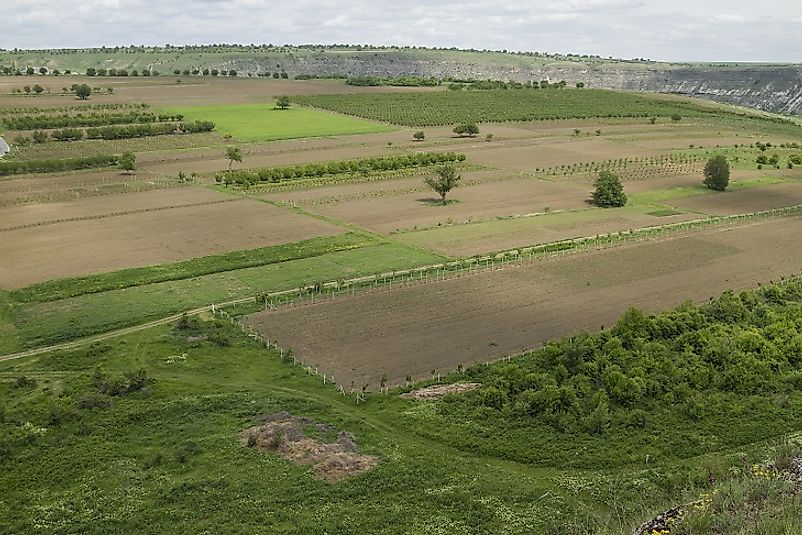Lowest Risk Premiums On Loans By Country

Equity risk premium, or equity premium, is the excess return that stock market investors can accumulate at a risk-free rate, most commonly through government treasury bonds. In a nutshell, the risk premium rate is the lending rate minus the treasury bill rate. In general, risk premiums are generally inversely proportional to the price point for risky assets.
Premiums vary depending on the level of risk in each country's economy, and they also change over time as market risk fluctuates. The equity risk premium on loans for any given country is determined by taking into account a number of factors, including economic risk, volatility of Gross Domestic Product (GDP), the status of infrastructure and communication systems, and historical data. The ten countries discussed below are international leaders in low equity risk premium lending rates. All were lower than 2.5% in the year 2015.
Moldova (-6.4%)
Although the Republic of Moldova is one of Europe's poorest nations, and despite continued political instability and bank fraud, the country's economy has been growing steadily since 2001. Moldova has made considerable economic reforms since its independence from the Soviet Union in 1991. Exports to the European Union (EU) have been increasing since the signing of the Deep and Comprehensive Free Trade Area (DCFTA) accords. Prices have been liberalized and subsidies on basic consumer goods have largely been phased out. The privatization of Moldova's agricultural land has also had a positive effect on the economy.
Zambia (-5.8%)
Zambia's economic success is a result of advanced banking standards, high commodity prices, and political stability. Since 2000, Zambia has been able to significantly reduce poverty through national and international program implementation. Governmental power is kept in check by a floating exchange rate and open capital markets. Copper output continues to increase, while diversification of exports and an increase in tourism also promote continued economic stability.
Egypt (0.3%)
Egypt has made great strides to rebuild, reform and improve its economy after years of political upheaval. Recent political stability has revived the tourism industry, providing much-needed revenue. Additional incentives have been put in place to encourage more dynamic investments and create new jobs in the private sector. Successful reform of fuel subsidies has also greatly contributed to an already diverse and vibrant economy.
Sri Lanka (0.3%)
With an economy driven by agriculture, apparel, and tourism, Sri Lanka has made great strides towards privatization in recent years. There have been extensive reforms of tax, tariff and foreign investment laws. The expanding services sector has also spurred economic growth, particularly in the last five years.
Mexico (0.4%)
Constitutional reforms in energy, education and telecommunications have been a boon to the Mexican economy. Recent efforts have been made to enhance regulatory efficiency and liberalize investment regimes. Banking stability continues to attract increasing numbers of foreign investors, and the financial sector has retained its competitiveness in the face of recent global financial challenges.
Malaysia (1.5%)
Malaysia has recently undertaken expansive structural reforms to encourage creative entrepreneurship. In 2015, the government began an innovate multi-year drive to reduce and eventually eliminate fuel subsidies. The public finance sector remains stable, and there is continued improvement in regulatory efficiency.
Iceland (1.7%)
Iceland's economy took a major hit during the 2008 banking crisis, but the country has made great strides recently in the areas of public finance and policy reform. Iceland's banking system has undergone a major restructuring. Combined with a strong legal framework, minimal corruption and a competitive regulatory system, Iceland's economy is bouncing back.
Hungary (1.7%)
Hungary has embraced the modernization of trade and investment during their transition to a free-market economy. New regulations allow for innovation and flexibility in business practices. In 2015, the government responded to a drop in oil prices worldwide by lowering domestic regulated energy prices. Agriculture subsidies are also being drastically reformed.
Canada (2.3%)
Canada's strong economic fundamentals and financial prudence have served it well in recent years. Its banking sector has remained stable in spite of global and domestic financial challenges. Open-market policies and a focus on global trade and investment have also kept the economy growing.
Uruguay (2.4%)
Uruguay is a standout country compared to most others in Latin America because of its longstanding intolerance for corruption and its history of open economic practices. International investors are attracted to improvements in regulatory efficiency, and financial institutions are being revamped to encourage greater use of services by the general public.
Lowest Risk Premiums On Loans By Country
| Rank | Country | Risk Premium Lending Rates in 2015 |
|---|---|---|
| 1 | Moldova | -6.4% |
| 2 | Zambia | -5.8% |
| 3 | Egypt | 0.3% |
| 4 | Sri Lanka | 0.3% |
| 5 | Mexico | 0.4% |
| 6 | Malaysia | 1.5% |
| 7 | Iceland | 1.7% |
| 8 | Hungary | 1.7% |
| 9 | Canada | 2.3% |
| 10 | Uruguay | 2.4% |







